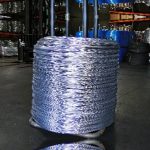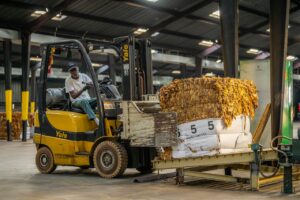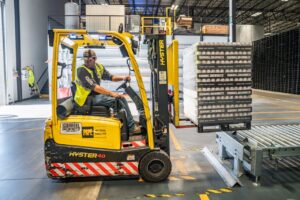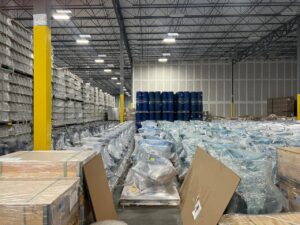
If you’re in the business of purchasing or selling baling wire, it’s important to know the history of your product. Baling wire has come a long way since its inception and has played an important role in the evolution of manufacturing and recycling. In this blog post, we’ll take a look at the history of baling wire and how it has evolved over time.
Vulcan Wire is proud to use recycled materials in their products. To find out more check out our inventory of wire here.
The Origins of Baling Wire
Baling wire originated in the mid-1800s. It was first used to bind hay bales together, hence the name “baling wire”. The first baling wire was made of iron and was quite heavy. This made it difficult to use and transport. Since the wire wasn’t built as strong as it is today, it was pretty common for part of the wire to snap off, which posed great danger to those working with it. This includes animals accidentally eating broken wire when grazing hay bales.
The First Baling Press
In 1872, Charleston Withington created the first prototype for a baling press. This machine was designed to compress hay bales so that they could be transported more easily. It was a success and led to the development of other baling machines.
The Evolution of Baling Wire
In the early 1900s, baling wire was improved by replacing the iron core with a steel core. This made the wire stronger and more durable. This made it lighter and easier to use. However, steel is susceptible to rusting, which can cause problems for baling wire over time. The new steel-core baling wire was also much lighter than its predecessor, making it easier to work with. This new and improved baling wire quickly became the industry standard.
In the 1950s, galvanized steel was introduced, which helped to prevent rusting and extend the life of baling wire. As time went on, manufacturers began experimenting with different materials for the wire’s core. This led to the development of baling wire made of aluminum and even plastic. While these materials are not as strong as steel, they are much lighter and easier to work with. This made them ideal for applications where weight is a factor, such as in the automotive industry.
Today’s Baling Wire
Today, baling wire is made from a variety of materials, including aluminum, stainless steel, and even plastic. This gives users a variety of options to choose from depending on their needs. There are also a variety of sizes and thicknesses available.
The Importance of Wire Consistency
One of the most important factors to consider when purchasing baling wire is consistency. The wire must be of a consistent thickness and size in order to work properly. If the wire is too thin, it will break easily. If the wire is too thick, it will be difficult to work with and could damage the equipment. The history of baling wire has made this clear. That’s why it’s important to purchase baling wire from a reputable supplier who can guarantee consistency such as Vulcan Wire.
Final Thoughts
Baling wire has come a long way since its humble beginnings. It has played an important role in the manufacturing and recycling industries and will continue to do so for years to come. If you’re in the market for baling wire, consider Vulcan Wire. We offer a variety of sizes and materials to choose from, and our team can help you select the right wire for your needs. Contact us today!





















